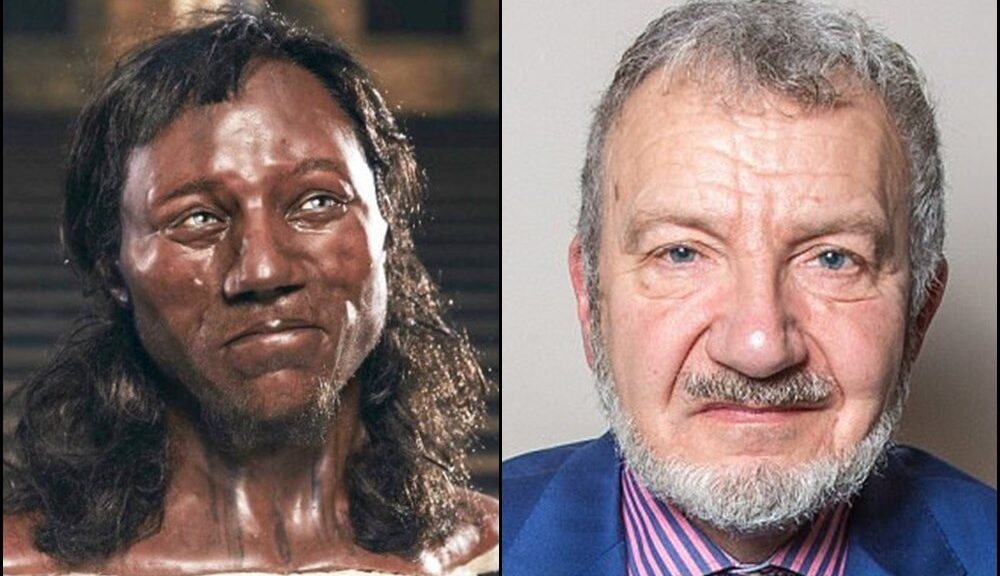An English history teacher and a 9,000-year-old skeleton known as Cheddar Man share a surprising connection through their DNA, despite being separated by millennia. This intriguing discovery came to light when Adrian Targett, a retired history teacher from Somerset, stumbled upon a newspaper featuring Cheddar Man's image, a distant relative who lived around 10,000 years ago.
Cheddar Man, an ancient Mesolithic skeleton found in Gough's Cave in Cheddar Gorge, Somerset, has provided scientists with valuable insights into one of the earliest modern humans in Britain. Cheddar Man, often celebrated as the first modern Briton, lived approximately 7,150 BC. His remains are preserved at the Natural History Museum in London, where they are displayed in the Human Evolution gallery.
It's worth noting that Cheddar Man's name is not derived from a love of cheese, which hadn't been developed yet, but rather from the location where he was found in Cheddar Gorge, Somerset, the birthplace of cheddar cheese.
Around 25 years ago, scientists conducted DNA analysis using genetic material from one of Cheddar Man's molar teeth, leading to the identification of Adrian Targett as a direct descendant. Cheddar Man's nuclear DNA suggested he belonged to the Western European hunter-gatherer population of his time. This likely meant he had lactose intolerance, light-colored eyes (probably green but possibly blue or hazel), dark brown or black hair, and dark to black skin. Although an intermediate skin color couldn't be ruled out, he had "ancestral" versions of genes associated with reduced pigmentation, implying a "dark to black" skin tone.
Recent DNA research utilizing advanced technology allowed scientists to create a forensic reconstruction of Cheddar Man's facial features, skin and eye color, and hair texture. The surprising revelation was that this ancient Briton had dark to black skin and bright blue eyes, contrasting with a previous reconstruction that depicted a white face with brown eyes and a stereotypical caveman appearance.
Adrian Targett, who was unaware of this information, humorously remarked, "I do feel a bit more multicultural now, and I can definitely see that there is a family resemblance. That nose is similar to mine. And we have both got those blue eyes."
The initial scientific analysis from 1997 revealed that Mr. Targett's family lineage had persisted in the Cheddar Gorge area for nearly 9,000 years, with genes passed down through mitochondrial DNA, inherited from the egg, indicating a common maternal ancestor shared by Cheddar Man and Adrian Targett.
Cheddar Man's dark skin color challenges the previous assumption that human skin tones lightened around 40,000 years ago as populations moved north to regions with less intense African sunlight. Lighter skin could better absorb sunlight, essential for producing vitamin D, a nutrient crucial for preventing conditions like rickets. However, recent research suggests that genes associated with lighter skin began spreading about 8,500 years ago, as dark-skinned hunter-gatherers interbred with early farmers from the Middle East carrying genes for light skin.
Cheddar Gorge remains a significant site for Paleolithic human remains, and Cheddar Man was buried near a cave mouth. His genetic legacy is not limited to Adrian Targett, as many modern Britons share around 10% of their genetic ancestry with the West European hunter-gatherer population from which Cheddar Man descended.

No comments:
Post a Comment